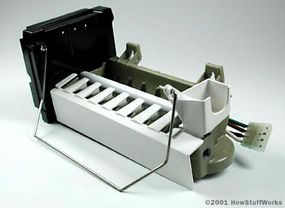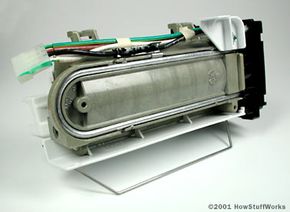Only a century ago, ice was hard to come by in most parts of the world. In hotter climates, you had to buy your ice from a delivery service, which imported hefty blocks from a colder climate or from an industrial refrigeration plant. The price of ice was relatively steep, but if you wanted to keep your food cold, you didn't have much choice. In the hottest parts of the world, ice was a rare luxury. In an equatorial country, you might live your whole life and never even see a piece of ice.
This all changed in the early 20th century. Compact, affordable refrigerators brought the means of food preservation and ice production into the home and corner store. In the 1960s, new automatic icemaker machines made life even easier. These days, most Americans take ice completely for granted, even during the hottest days of summer.
Advertisement
In this article, we'll find out what's inside a typical home icemaker, as well as the larger commercial icemakers you might find at a hotel or grocery store. As we'll see, the basic process of making ice is very simple -- you just freeze water -- but spitting out perfectly shaped ice cubes is a fairly elaborate process.
The home icemaker's predecessor was the plastic ice tray. It's fairly obvious how this device works: You pour water into a mold, leave it in the freezer until it turns to a solid and then extract the ice cubes. An icemaker does exactly the same thing, but the process of pouring water and extracting cubes is fully automated. A home icemaker is an ice-cube assembly line.

Most icemakers use an electric motor, an electrically operated water valve and an electrical heating unit. To provide power to all these elements, you have to hook the icemaker up to the electrical circuit powering your refrigerator. You also have to hook the icemaker up to the plumbing line in your house, to provide fresh water for the ice cubes. The power line and the water-intake tube both run through a hole in the back of the freezer.
In the next section, we'll look at the cycle an icemaker goes through to make ice.
Advertisement

